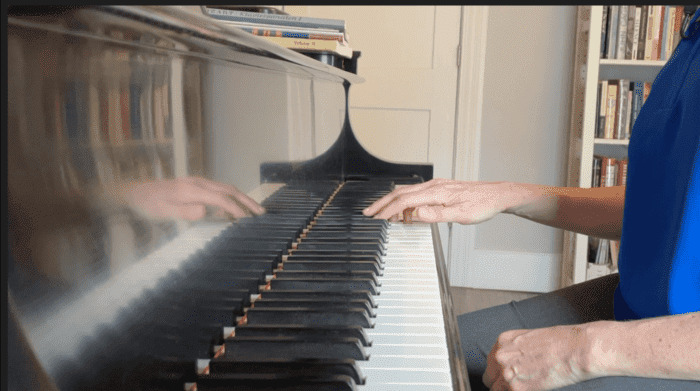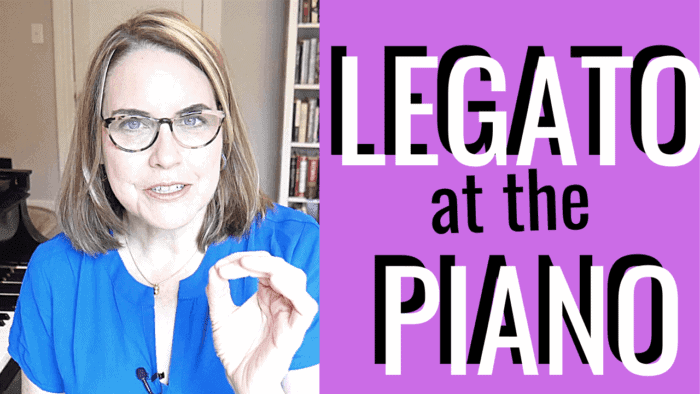Legato is one of the fundamental ingredients for expressive playing at the piano. Playing truly legato allows us to actually create a long, singing line on the piano. In order to play legato, the fingers need to go down and come up at the same rate, shifting weight from one finger to another with a loose and relaxed arm.

The idea for this video arose as the result of a miscommunication between a student and me over the idea that legato is a touch on the piano (as opposed to just a continuous sound created by holding the pedal).
This video is the first in my new series about Expressive Playing at the piano. In response to viewer requests, I’m going to be talking about the nuts and bolts of how to play expressively. I think we all agree: it’s all fine and good to work on technique, but if the expressive tools are not in place, there won’t be “meaning” behind the notes!
In this video I go over the principles of legato, do some demonstrating of legato using nocturnes by Louise Farrenc and Frédéric Chopin, and give you an exercise to practice overlapping your fingers to create an especially “gluey” and connected effect.
Click on the photo to watch the video:

What about you? How will you apply legato in your own playing? Let me know in the comments!
Share this article
